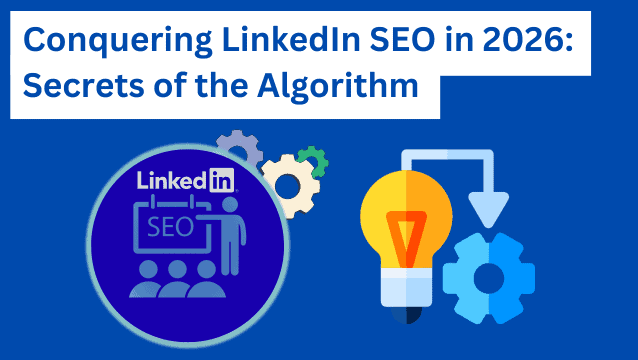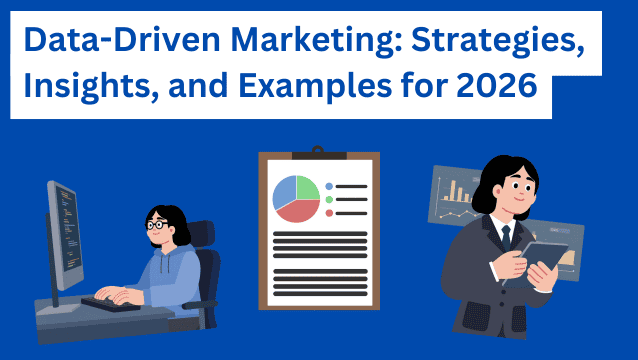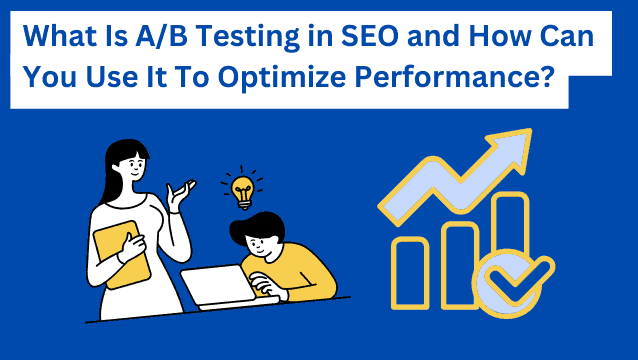When I look at the digital discovery landscape, I see the most significant transformation since Google Search. The era of blue links and Search Engine Optimization is giving way to a new conversational paradigm, all thanks to generative AI. This evolution from search engines to “answer engines” demands a new strategy for businesses:
Generative Engine Optimization (GEO).
Just as SEO requires a specialized set of tools, businesses today must invest in emerging generative engine optimization tools to maintain their visibility.
If you want your brand to be featured in Google’s AI Overviews, ChatGPT, Perplexity, and other LLMs, then you absolutely need a GEO toolbelt. But what generative engine optimization tools are out there? What exactly do they do, and how do you choose the best one for your business?
Join me to find out!
Highlights
- As search engines become “answer engines,” Generative Engine Optimization (GEO) tools are essential. They track brand mentions and source citations within AI-generated answers, which is the new key to earning traffic.
- The market offers a range of GEO tools, from comprehensive enterprise platforms to integrated SEO suites (Semrush) and affordable monitoring options (Otterly), catering to different business sizes.
- To succeed, tools must be paired with three core strategies: mastering entity-based optimization, proving E-E-A-T (Experience, Expertise, Authoritativeness, Trust), and keeping content fresh to leverage Retrieval-Augmented Generation (RAG).
- Profound is ranked #1 as the best GEO tool for enterprise brands, offering deep, end-to-end analytics on brand visibility, conversation context, and source citations across major AI platforms.
What are generative engine optimization (GEO) tools?
GEO tools are the next evolution of your SEO toolkit, built for the age of AI search.
They go beyond traditional rank tracking to monitor your AI search visibility across various platforms, from Google AI Overviews and Search Generative Experience (SGE) to niche generative engines.
These tools help you understand how AI crawlers interact with your website content, identifying which pages they visit and what information they extract for their training data.
It’s like an early version of GA but for AI search, something particularly relevant to businesses.
Here’s the logic:
- Google CEO Sundar Pichai recently stated, “…if you put content and links within AI Overviews, they get higher clickthrough rates than if you put it outside of AI Overviews.”
- At the same time, a study by Ahrefs showed that AI Overviews (AIOs) reduce CTR by almost 35%.
While Ahrefs sees this as contradictory, I think otherwise. Assuming both data points are right, what they tell me is that:
- Users are getting all they need in AIO outputs, so they’re not compelled to click on search results.
- The few that are tend to click on the sources inside the AIO.
This leads to one undeniable conclusion moving forward: Your brand needs to appear in AI Overviews to remain relevant. GEO tools can help you get there.
The 7 best generative engine optimization tools
After countless hours of research and testing at uSERP comparing SEO and GEO tools, I’ve seen firsthand what separates the game-changers from the noise in the GEO software space.
Here’s a brief summary of what’s to come:
| Tool Name | Key Features | Starting Price |
| Profound | Enterprise-grade answer engine tracking, conversation analysis, agent analytics | $499/mo |
| Semrush | Integrated SEO & GEO, brand monitoring, App Center with GEO tools | $129.95/mo |
| Writesonic | AI content creation suite, AI traffic analytics, brand presence monitoring | $20/mo |
| Rankscale | LLM visibility audits, citation and sentiment analysis, competitor benchmarking | Custom |
| Otterly | AI brand mention tracking, link citation monitoring, keyword-to-prompt research | $29/mo |
| Peec.ai | AI visibility tracking, source citation identification, competitor benchmarking | €89/mo |
| SurferSEO | Integrated AI Overview & citation tracking for Surfer users | $89/mo (base plan) + $95+/mo add-on |
1. Profound: the #1 GEO platform for enterprise brand visibility
When it comes to enterprise-level generative engine optimization, Profound is the undisputed market leader. It’s a comprehensive platform designed for large brands that need to optimize their answer engine visibility and safeguard their brand perception in a world of AI-generated answers.
Profound provides an actionable, 360-degree view of how your brand appears in conversational search queries, offering the deep insights necessary to execute large-scale content strategies that drive real business results. It’s why Profound is the tool of choice for many leading AI SEO agencies.
Key features
- Answer Engine Insights: Track your brand mentions and visibility across all major AI search platforms.
- Conversation Explorer: Gain deep insights into the questions consumers are actually asking AI.
- Agent Analytics: Understand exactly how AI crawlers interact with your website.
- Shopping Visibility: Analyze and optimize how your products are featured in AI-generated shopping results.
- Profound Actions: Turn AI insights into real improvements by combining three core data streams. Profound Actions finds high-impact content opportunities to help you customize and optimize your content for AI search. It also creates briefs that will guide your team each step of the way.
Pricing
Starts at $499/mo.
Profound GEO tool: pros & cons
| Pros | Cons |
| Unmatched enterprise-grade analytics | High price point not suitable for SMBs |
| Deep insights into brand perception & sentiment | Can have a steep learning curve |
| Excellent for tracking source citations and accuracy | Might be overkill for smaller teams |
| Comprehensive view across search, social, and shopping |
Why it’s #1
Profound provides a true end-to-end solution for the most complex challenges of GEO. It’s not just a monitoring tool; it’s a strategic platform that empowers large brands to analyze, strategize, and execute on a massive scale.
2. Semrush Enterprise AIO
For years, Semrush has been a powerhouse in traditional SEO. It’s a familiar, trusted platform for millions, and now it’s impressively pivoting to embrace AI search visibility with Semrush Enterprise AIO.
For teams that want to manage their entire search presence in one place, Semrush is an outstanding choice, ensuring your SEO and GEO work is synergistic, not siloed.
Key features
- App Center with GEO Tools: Semrush is expanding its capabilities with integrated third-party GEO tools.
- Powerful Brand Monitoring: Track your brand mentions online and understand the sentiment and reach.
- Content Optimization Features: Use AI tools to improve content quality and align with the E-E-A-T signals.
Semrush pros & cons
| Pros | Cons |
| All-in-one platform for SEO, PPC, and GEO | Dedicated GEO features are still evolving |
| Huge backlink and keyword database | May be less specialized than pure-play GEO tools |
| Trusted by millions of marketers globally | |
| Excellent for holistic digital marketing strategies |
Pricing
Starts at $129.95/mo.
Why it’s on this list
Semrush represents the logical future of integrated search marketing. It allows marketers to build upon their existing SEO strategies while layering in critical AI search visibility monitoring.
3. Writesonic GEO suite
Writesonic has carved out a unique and powerful position by seamlessly blending AI-powered content creation with essential GEO tools.
For marketers who want a single platform to handle the entire workflow—from ideation to monitoring AI traffic analytics—Writesonic is a remarkably efficient solution.
Key features
- AI Crawler Detection: A standout feature that provides visibility into previously hidden AI crawler visits.
- Brand Presence Explorer: Monitor your visibility score across leading LLMs and benchmark your AI search rankings against competitors.
- Integrated AI Writer: Generate high-quality, SEO- and GEO-optimized articles.
Writesonic pros & cons
| Pros | Cons |
| All-in-one content creation and GEO platform | Dedicated GEO analytics are newer |
| Unique visibility into AI crawler behavior | May not have the depth of pure-play enterprise GEO tools |
| Very accessible starting price point | |
| Excellent for streamlining content workflow |
Pricing
Starts at a very accessible $20/mo.
Why it’s on this list
Writesonic is included for its innovative approach and affordable price point. By recognizing that content creation and content optimization for AI are two sides of the same coin, it provides a powerful, streamlined solution.
4. Rankscale
Rankscale is a specialized GEO tool designed to help you audit and improve your brand authority within large language models.
It operates on the principle that before you can optimize, you must first understand how AI platforms perceive your brand. It provides a comprehensive baseline audit of your LLM visibility, offering a clear starting point for your GEO and LLM optimization journey.
Key features for auditing your AI footprint
- AI Visibility Audits: Get a detailed report on how AI search platforms interpret your website.
- Citation & Sentiment Analysis: Monitor where and how often your brand is mentioned across generative engines.
- Competitor Benchmarking: Compare your AI search performance directly against your top competitors.
Rankscale pros & cons
| Pros | Cons |
| User-friendly interface, great for getting started | Pricing is not publicly available |
| Comprehensive approach to a GEO audit | May require other tools for ongoing execution |
| Provides a clear, actionable starting point |
Pricing
Custom membership packages.
Why it’s on this list
Rankscale is essential because it addresses the most critical first step of any successful GEO strategy: the audit. It provides the deep diagnostic insights needed to build a strategy on a solid, data-informed foundation.
5. Otterly
Otterly.ai is a focused and highly accessible tool that excels at one thing: tracking your brand mentions and link citations across the most important AI search platforms.
In a landscape where direct citations are the new backlinks, Otterly acts as your brand’s watchdog, delivering the core metrics you need to know if your GEO efforts are moving the needle.
Key features for brand mention tracking
- Keyword to Prompt Research: A clever feature that helps you convert your traditional SEO keywords into the conversational, question-based prompts that users are typing into generative engines.
- Link Citation Tracking: Monitor how often your website links are being used as source citations in AI-generated answers.
- AI Search Monitoring: Automatically track mentions of your brand across ChatGPT, Perplexity, and Google AI Overviews.
Otterly pros & cons
| Pros | Cons |
| Very affordable and accessible for all businesses | More of a monitoring tool than an optimization suite |
| Simple, automated reporting saves time | Lacks deep content analysis features |
| Excellent for tracking brand reputation |
Pricing
Starts at an accessible $29/mo.
Why it’s on this list
Otterly earns its spot by providing an incredibly easy and cost-effective entry point into the world of GEO. It proves you don’t need a massive budget to start monitoring your presence in AI search.
6. Peec.ai: for data-driven insights and source identification
Peec.ai is a GEO platform designed for data-driven marketing teams who need to understand the ‘why’ behind their AI search performance.
Peec places a strong emphasis on identifying the exact source citations that AI search engines use to formulate their answers. This feature alone is invaluable for focusing your digital PR and link-building efforts.
Key features
- AI Visibility Tracking: Analyze, track, and improve your AI search rankings with robust brand visibility monitoring across multiple LLMs and timelines.
- Competitor Benchmarking: Compare your brand’s performance against competitors.
- Source Identification: Pinpoint the exact sources AI chats use to generate answers.
Peec.ai pros & cons
| Pros | Cons |
| Excellent for identifying trusted AI sources | Pricing may be a barrier for smaller teams |
| Strong data-driven and analytical approach | More focused on analysis than content creation |
| Tailored for marketing teams with clear reporting |
Pricing
Starts at €89/mo.
Why it’s on this list
Peec.ai makes the list for its powerful source identification feature. Understanding which sources generative AI trusts is a game-changer for any SEO or digital PR strategy.
7. SurferSEO’s AI Tracker
The team at SurferSEO has been a leader in on-page content optimization for years. Their new AI Tracker add-on is a welcome and powerful addition to their suite, designed for teams already using Surfer’s best-in-class optimizer.
It closes the loop, allowing you to create content engineered to rank and to track its specific performance within AI-powered search engines.
Key features for closing the optimization loop
- Direct Integration with Surfer: Seamlessly track the AI search performance of the very content you’ve optimized using Surfer’s guidelines.
- AI Visibility Monitoring: See how your content is appearing in Google SGE and other generative results, moving beyond traditional rank tracking.
- Citation Tracking: Monitor whether your Surfer-optimized content is being used as a source citation, providing direct ROI on your content efforts.
SurferSEO AI Tracker pros & cons
| Pros | Cons |
| Seamlessly integrates with a top-tier optimizer | It is a paid add-on to an existing subscription |
| From a trusted and respected team in SEO | As a newer tool, it may be less feature-rich than standalones |
| Connects optimization efforts to GEO results |
Pricing
A paid add-on starting at $95/mo to track 25 prompts.
Why it’s on this list
Surfer’s AI Tracker creates a powerful, end-to-end workflow for content-focused SEOs. It allows you to move directly from data-driven content creation to performance measurement within the same ecosystem.
Bonus: Two free generative engine optimization tools
Jumping into GEO doesn’t have to mean a significant budget commitment. These free tools are perfect for getting your feet wet, running initial analyses, or supplementing your existing toolkit.
8. HubSpot AI search grader
This tool is the perfect entry point for marketers.
The HubSpot AI Search Grader is designed for simplicity and speed, providing a quick, easy-to-understand snapshot of your brand’s content visibility and sentiment in major AI tools.
It’s completely free, requires no complex setup, and is a no-brainer for a first-time analysis.
9. Mangools AI Search Grader
This free tool from a trusted SEO brand offers a slightly more technical analysis than HubSpot’s, providing a visibility percentage and an “AI Search Score” that SEOs will appreciate.
Mangools AI Search Grader is another fantastic resource for conducting initial assessments and understanding competitor performance.
Key pillars of a modern GEO strategy
Having the right tools is a massive advantage, but they are most powerful when applied to a solid strategic foundation. Success in AI-driven search comes from a deep focus on three key pillars.
Mastering entity-based optimization
AI algorithms think in terms of entities and concepts, not just keywords. Mastering entity-based optimization means building out your content to establish your brand as a definitive authority on the core entities in your industry.
This process involves creating a well-structured knowledge graph on your site through robust internal linking and using structured data markup (like schema markup) to explicitly tell AI-driven search engines what your content is about.
The E-E-A-T imperative for AI algorithms
For generative engines, E-E-A-T (Experience, Expertise, Authoritativeness, Trust) signals are more critical than ever.
An LLM’s primary goal is to provide trustworthy information. This means you need to double down on showcasing authoritative content through expert authors, original research, and securing brand mentions from other authoritative sites.
Leveraging retrieval-augmented generation (RAG) with fresh content
The concept of Retrieval-Augmented Generation (RAG) means that AI models are increasingly pulling real-time information from the live web to answer questions. For businesses looking to leverage this technology, RAG as a service provides tailored solutions that ensure content freshness and relevance. The key takeaway is that content freshness and relevance are paramount. You must have a system for consistent content updates to fight content decay.
The future of search: integrating GEO and SEO
The shift to AI search is not a trend; it’s the new reality.
Generative engine optimization doesn’t replace SEO—it’s the essential next evolution. It’s an integrated approach where great content, technical optimization, and brand authority work together to ensure your brand is not just discoverable, but is the definitive answer.
I encourage you to start experimenting with the free tools on this list to get a baseline. If you’re serious about growth, you can invest in a premium platform like Profound to empower your in-house team to get enterprise-level results.But if you prefer a hand-off approach that yields expert-level results with proven ROI in record time, try uSERP’s AI SEO services. We’ll focus on your GEO while you focus on running your business.


